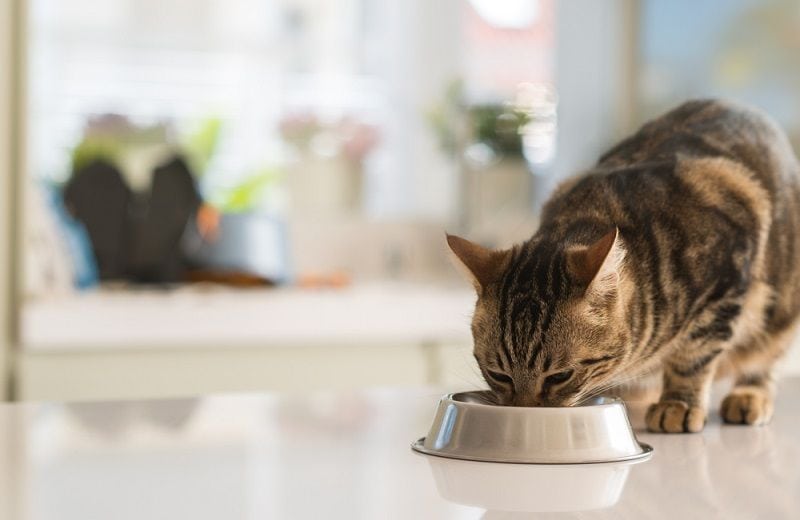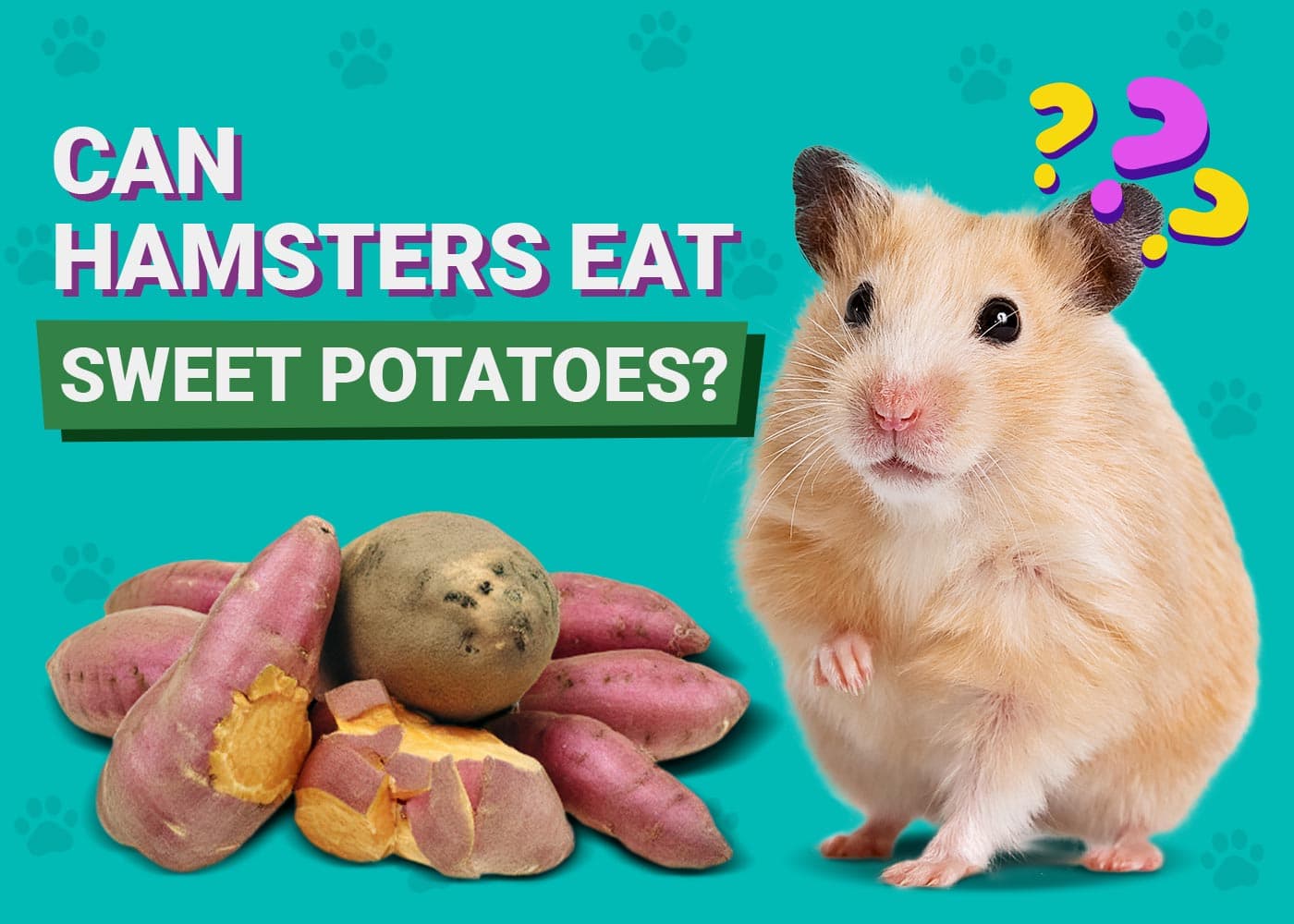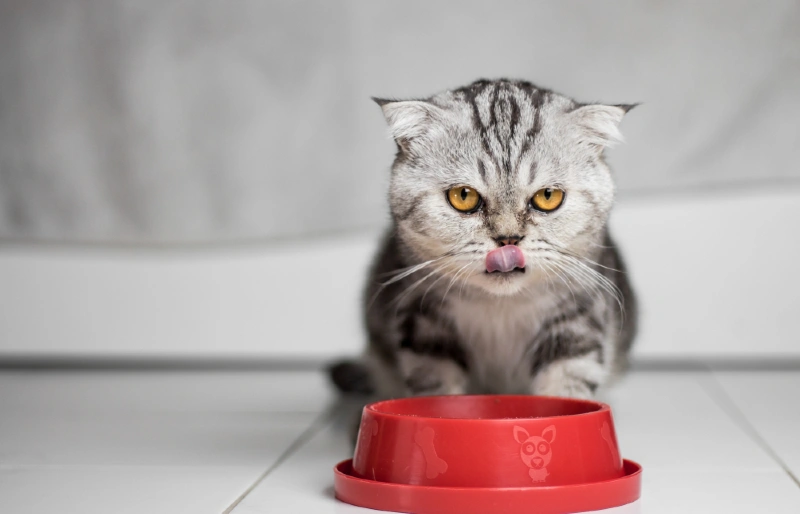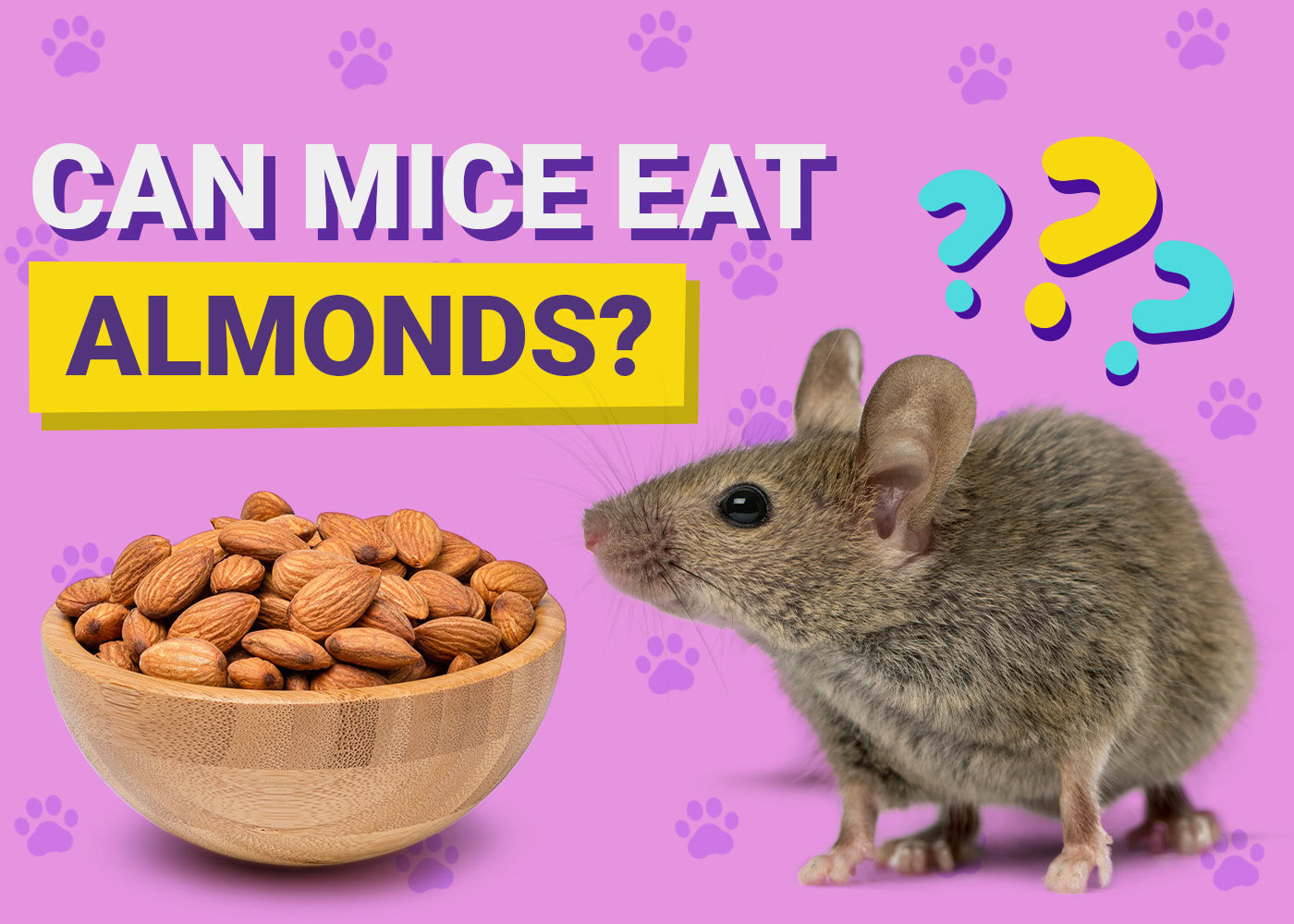VET APPROVED

The information is current and up-to-date in accordance with the latest veterinarian research.
Learn more »Click to Skip Ahead
Wet cat food often gets a “paws up” from our feline friends. It is a savory meal choice, spiking the appetite of almost any kitty. Plus, it is easy to eat at any life stage. It has a high moisture content, which most cats lack in their daily diet. As you can see, there are tons of perks.
But because wet cat food is high in calories, you need to portion the meals correctly. So, how much wet food do you feed your cat? Let’s calculate.

Benefits and Downfalls of Wet Cat Food
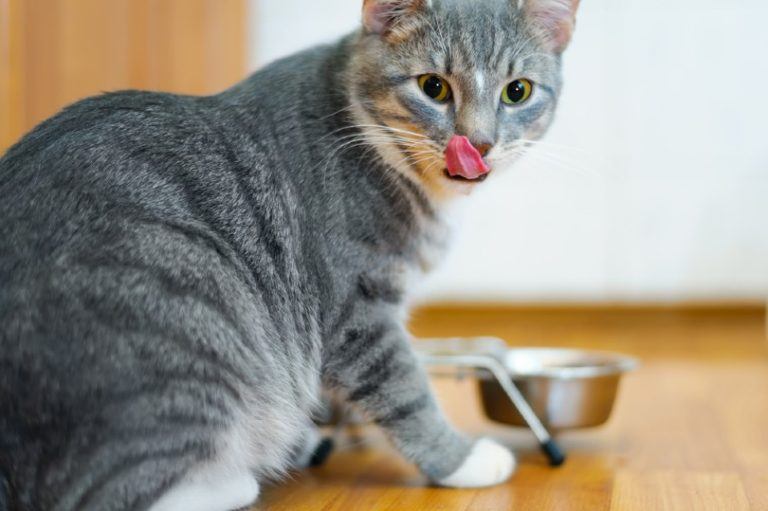
Wet cat food has its perks, but there are also some things to consider. Here are a few.
- High protein: Wet cat food typically has more protein than traditional kibble. That is because it many formulas have proportionally fewer carbohydrates.
- Moisture content: Cats evolved to get their hydration from their high-mositure prey and are not very efficient at drinking water. Wet cat food boosts their moisture intake.
- Less carbohydrates: Wet food is more likely to be low in carbohydrates because starches are not required to maintain shape.
- Savory flavors: Cats love the aromatic flavors of wet cat food. It can appeal to the tastebuds of even the pickiest felines.
- Mixable: You can mix dry kibble with wet food. It will give an extra kick of moisture to their daily meal.
- High calorie content: You have to be careful when it comes to wet cat food. It typically has a higher caloric content than traditional dry kibble. Too much can cause your feline friend to pack on the pounds.
- Expensive: When compared to kibble, wet cat food can be more expensive.
- Storage space: Since cans are 75-80% water, they also take up considerably more space in your home to store.
- Low shelf life: When you open a can of wet cat food, you have to put it away in the fridge if the can isn’t empty. Dry kibble lasts quite a long time. However, wet cat food only lasts up to three days in the refrigerator.

What Types of Cats Benefit Most From Wet Cat Food?
Any cat can enjoy wet cat food. But certain felines could use the upsides of this diet more than others.
- Seniors: As our kitties age, their teeth aren’t in as good of shape as they once were. Wet cat food boosts their appetite so they can get the nutrition they need—and won’t have any trouble scarfing down.
- Dental issues: If you have a cat who suffers from dental issues, tooth sensitivity, or missing teeth, wet cat food could be a great alternative to dry kibble. Even cats with several missing teeth can easily consume this food type.
- Malnutrition: If you were trying to rehabilitate a cat that has suffered from a lack of proper nutrition, wet cat food could be a great way to get their body weight back up and running.
- Picky eaters: We all have seen our cats snub their noses and walk away from a meal if they’re not interested. If you have a particularly picky cat, warmed-up wet food can stimulate its senses.
- Cats with urinary problems: Cats with recurrent urinary issues can benefit from the increased moisture in cat food. If your cat has CKD, look for veterinarian-recommended low-phosphorus wet cat food.
Why Healthy Weight Is Important
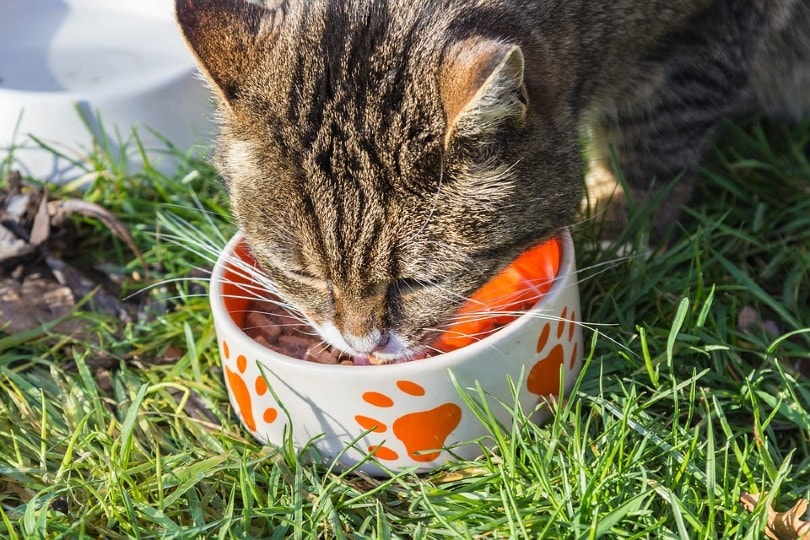
Of course, chubby kitties are super adorable, but health is another story completely. If your cat is overweight, it can cause a whirlwind of complications for your pal, including:
- Infections
- Fatty liver disease
- Cancer
- Skin disorders
- Diabetes
- Joint problems and arthritis
Managing weight correctly is the primary way to prevent these issues from manifesting. If you’re trying to cut back on your cat’s daily intake, it’s important to seek exact measurements from your vet.

How Much Wet Cat Food Does Your Feline Need?
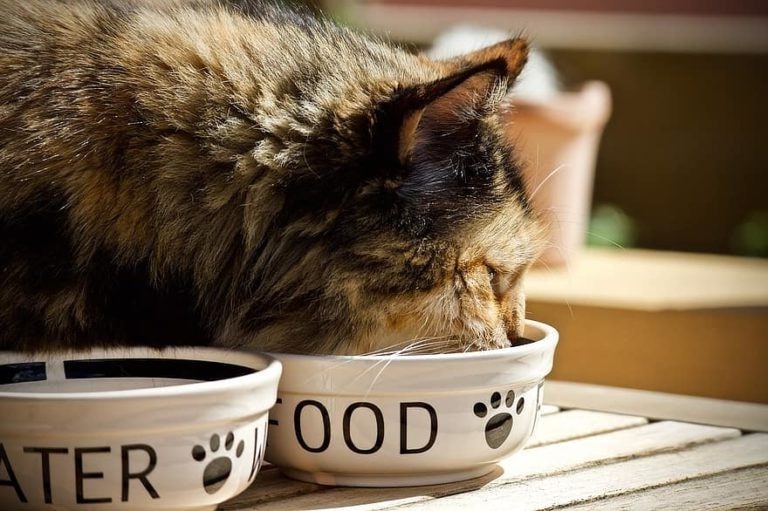
Your cat should ultimately have their food portioned according to their weight. Here are steps you can take to calculate how much your cat needs.
1. Weight
Weight is the number one determining factor when you’re deciding how much wet food to give your cat. You calculate the calorie intake based on how many pounds your cat weighs.
2. Pregnant/Nursing
When your cat is pregnant, they need all the nutrition they can get. That includes the uptake of caloric value for the day. When they’re nursing, they also need a higher amount of nutrients to replenish their milk supply. After all, mothers are feeding an entire litter of kittens as well as themselves.
3. Age
Kittens, adults, and seniors all need a diet based on their life stages. Knowing what age bracket they fall under will help you determine exactly how much to feed them when you are trying to portion out the correct amount of wet food.
4. Health
Specific health issues or restrictions can cause a change in dietary habits. Depending on your cat’s health, it can change how often or how much you feed them.
5. Activity Level
Some cats are extremely active, while others will barely move unless provoked. How many calories your cat burns in a day speaks volumes about how much food they should have. If you have a particularly high-energy cat, they will need to eat more than a lazy cat that naps most of the day.
Complement this information by using our cat calculator here:
The exact amount of calories an individual animal needs to maintain a healthy weight is variable and influenced by many factors including genetics, age, breed, and activity level. This tool is meant to be used only as a guideline for healthy individuals and does not substitute veterinary advice
Once you know how many calories your cat should eat in a day, you can easily calculate how much wet food to feed. Each specific wet food recipe has a different amount of calories per can. You will need to do some simple mathematics to figure out how many cans your cat should eat in a day. Then divide the total amount between the number of daily meals you offer to your cat. For a broad example, average-size cats eat between 1-1 ½ cans in a day, so they would get between ⅓-½ can in each of their three meals a day. Again, this can change depending on the cat and the recipe’s caloric density. If you need personalized advice, consulting with a veterinarian is the best way to ensure you offer just the right amount of food to your kitty.

Additional Factors to Consider

Here are a few other things to think about.
- Individualized portions: Certain cat food companies offer wet food and individualized portions. This can be especially good if you have a single-house cat and want to make sure you’re feeding them properly. You always must read the labels to make sure you portion correctly anyway. Just because they are designed for adult portions doesn’t mean that one serving will be an accurate measurement for your cat. Always offer food based on your cat’s weight, and specific requirements which can vary drastically between felines (our calculator can help with this).
- Proper storage: If you don’t use all of the portions in one sitting, be prepared to refrigerate and store the product as necessary. It would help if you placed the leftover servings in a storage container to keep the food from drying out.
- Remove leftovers: Because wet food spoils within a few hours, it’s crucial to remove these remnants after your cat finishes their meal. It can cause bacteria buildup and make your cat very sick if they eat spoiled morsels.

Final Thoughts
Hopefully, with this information and our trusty calculator, you have determined how much wet food your kitty needs. Remember, wet food has several perks, but it does contain a higher calorie count than many dry kibble recipes.
Just make sure that you are portioning your cat’s food correctly to avoid obesity or underfeeding. After all, you want your little buddy to live a long life of unlimited mobility.
See Also:
- Should You Mix Wet and Dry Cat Food? (The Pros & Cons)
- Best Wet, Soft & Canned Kitten Foods – Reviews & Top Picks
Featured Image Credit: Krakenimages, Shutterstock
